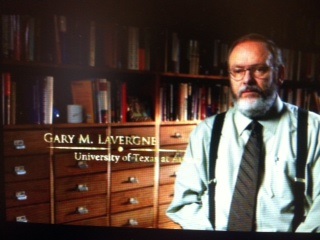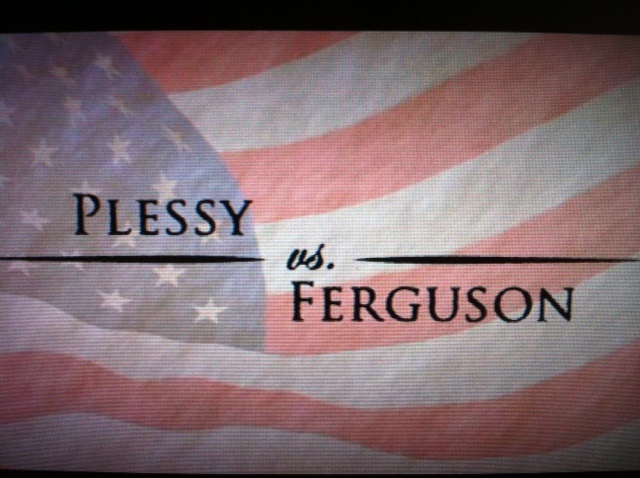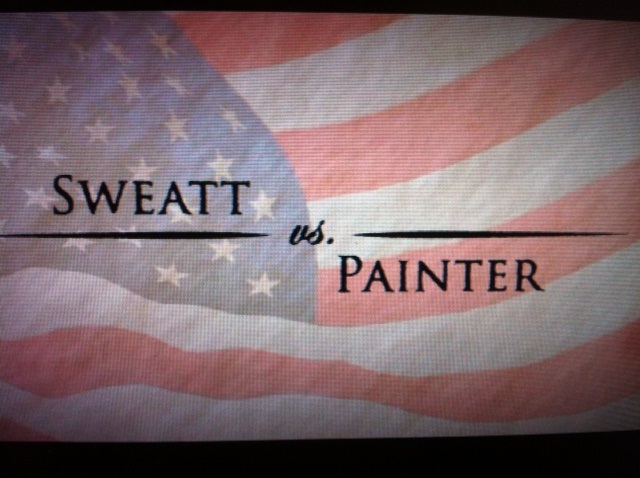|
About Gary Lavergne
News
Articles
BEFORE BROWN
A SNIPER IN THE TOWER
BAD BOY FROM ROSEBUD
WORSE THAN DEATH
Cajuns |
Message from the State Bar of Texas
Make knowledge your super power...
Civics education is critical to fostering engaged citizens who understand our democracy and the liberties it protects. The State Bar of Texas wants to ensure Texas students and teachers have the resources they need to fully explore the important role of the judicial system in our country and state.
Oyez, Oyez, Oh Yay! focuses on the landmark court decisions that Texas students must know to be successful in preparing for the Texas Essential Knowledge and Skills (TEKS) assessment tests in U.S. government and history. TEKS Standards
Students and teachers can search through the case summaries, videos and other helpful resources. And teachers, there are teaching strategies and suggested curriculum materials just for you.
What Does "Oyez, Oyez, Oyez" mean?
"Oyez" is primarily pronounced "o-yay," although sometimes as "o-yez" or "o-yes." It is used three times in succession to introduce the opening of a court of law, especially the U.S. Supreme Court. Word origin is Middle English and descends from the Anglo-Norman "oyez," the plural imperative form of "oyer" ("to hear"). Thus, it means "hear ye" – a common call for silence or attention in medieval England.
Visit the State Bar of Texas page on Civics Education...
|
 Visit the State Bar of Texas page on Civics Education...
Visit the State Bar of Texas page on Civics Education...
|
Gary Lavergne Appears in State Bar of Texas Educational VideosThe State Bar of Texas' Law-Related Education Department has created Oyez, Oyez, Oh Yay!, an engaging and interactive site geared toward helping students (and their teachers) explore the court decisions that have helped shape our country and the state of Texas — and, most important, how these decisions have affected our everyday lives.Some of the documentaries were filmed in Gary's home office in Cedar Park, Texas. He appeared in the documentaries on Plessy v Ferguson, Sweatt v Painter, and Grutter v Bollinger.
Visit the State Bar of Texas page on Civics Education...
|

Click on the image to watch video |
In 1890 the Louisiana Legislature passed the Separate Car Act, which required railroads "to provide equal but separate accommodations for the white and colored races in order to protect the safety and comfort of all passengers." In 1891 in New Orleans, a group of African-American and Creole doctors, lawyers, and businessmen formed the "Citizens Committee to Test the Constitutionality of the Separate Car Law." The committee chose Homer Plessy, who was one-eighth black, to test the law by openly violating it. On June 7, 1892, he boarded a passenger train and took a seat in the coach clearly marked "For Whites Only." He informed the conductor of his racial background. When the train conductor asked Mr. Plessy to move to the other coach, he refused and was for violating the Separate Car Law. He was tried in a Criminal District Court, found guilty, and sentenced to jail. His appeals made its way to the U.S. Supreme Court.
Visit the State Bar of Texas page on Civics Education...
|

Click on the image to watch video |
In 1946, Heman Marion Sweatt, a 33-year-old African-American mail carrier from Houston, Texas, appeared with a delegation of prominent African American leaders on the campus of the University of Texas at Austin and presented the President of the University, Theophilus Painter, with a copy of his undergraduate transcript from Wiley College and formally applied for admission to the University's Law School. He asserted that he had a right to the same legal training as any other Texan who was a college graduate and that since Texas did not have a law school for African-Americans, the state had to admit him to the University of Texas Law School.
Painter sought and received an opinion on Sweatt's application from the Texas Attorney General. In his letter to the Attorney General requesting his opinion, Painter wrote: "This applicant is a citizen of Texas and duly qualified for admission into the Law School at the University of Texas, save and except for the fact that he is a Negro." The Attorney General's opinion stated: "There is no doubt that if equal educational advantages are not provided for the applicant within the state, he must be admitted to the Law School of the University of Texas." However, the Attorney General wrote: "The state is entitled to a reasonable notice that the facilities providing equal educational advantages are desired before its established policy of segregation is abrogated." Once he received the Attorney General's opinion, President Painter dictated a letter to Sweatt informing him that at this time his application for admission was denied because the State of Texas was setting up a separate and equal law school for him. In May 1946, Sweatt filed suit against Painter and all the members of the University's Board of Regents. The District Court denied Sweatt's petition for an order directing his admission to the University's Law School and gave the state six months to provide an "equal" law school for African-American students. If the state did not do so, the judge ruled, the University of Texas Law School would be required to admit Sweatt.
In 1947, the Texas Legislature quickly passed legislation authorizing the University of Texas Board of Regents to establish a temporary law school in Austin to serve as "the School of Law of the Texas State University for Negroes." Such a Law School was established in four rooms in a building at 104 East 13th Street in Austin. The Legislature had mandated that students at this Law School would have access to the Texas State Law Library. Three professors from the University of Texas School of Law had agreed to teach classes for the African-American students. Heman Sweatt received a letter of admission to this new law school. Sweatt's lawyer advised him to reject the offer. Not a single applicant applied for admission.
After a rehearing, where Thurgood Marshall began a direct attack on the constitutionality of segregation, and where the "Sociological Approach" was used extensively for the first time, the District Court ruled that the state of Texas had provided Sweatt with a law school "substantially equal" to that of white students at the University of Texas School of Law. Therefore, the judge denied Sweatt's petition directing his admission to the University of Texas School of Law. In September 1947, Sweatt appealed to the Texas Third Court of Civil Appeals in Austin. In a preview of Brown v Board of Education Thurgood Marshall argued that the "separate but equal" argument was a fiction. The law school that the state had set up for Negroes in Austin was far from being equal to the University of Texas School of Law. Sweatt v Painter made its way to the U.S. Supreme Court for a landmark ruling second only to Brown in its impact on Jim Crow in the U.S.
Visit the State Bar of Texas page on Civics Education...
|

Click on the image to watch video | The University of Michigan Law School concluded that a diverse student body was a worthy goal that benefited all students. It, therefore, decided to institute a plan that sought to grant admission to a “critical mass” of qualified minority students. This meant that some white students would be denied admission even though they had higher grades and test scores. Race (for African-Americans) or ethnicity (for Hispanics and Native Americans) was thus one factor that was considered in evaluating candidates for admission, but it was not decisive and was by no means the only factor considered. The Law School’s admissions committee considered many other factors: an applicant’s LSAT score, undergraduate GPA, enthusiasm of recommenders, quality of the undergraduate institution, quality of the essay written for admission, residency, leadership and work experience, unique talents or interests, and difficulty of undergraduate course selection. In addition, students were sometimes admitted if there was a combination of poor performance on standardized tests but consistently outstanding academic records. No seats in the entering law school class were reserved or set aside for minority students. The stated goal of the Law School’s admissions procedure was “to admit a group of students who individually and collectively are among the most capable students applying to American law schools in a given year.
In 1996, Barbara Grutter, a 43-year-old single mother, applied for admission to the University of Michigan Law School. Grutter was Caucasian and had a 3.8 undergraduate GPA and a score on the LSAT that placed her nationally in the 86th percentile. After several months of being placed on a “wait list,” she was notified that her application for admission had been denied. She then filed a class action suit in a U.S. District Court, claiming that she was denied admission because minority students were given preferential treatment. The District Court ruled for Grutter and concluded that “the university’s use of race as a factor in its admissions decisions was unconstitutional and a violation of the Civil Rights Act of 1964.” It enjoined the law school from continuing to use race in its admissions decisions. The law school appealed to the U.S. Court of Appeals for the Sixth Circuit which overturned the lower court’s judgment. This court reasoned that the law school had tailored its admissions procedure in compliance with the U.S. Supreme Court’s 1978 ruling in Regents of the University of California v. Bakke, which at the time was the controlling legal precedent on this issue in the nation. Grutter now appealed to the U.S. Supreme Court.
Visit the State Bar of Texas page on Civics Education...
|
| Gary's Bio
|Before Brown| Worse
Than Death| Bad Boy From Rosebud |
Sniper in the Tower | Cajuns
| |




